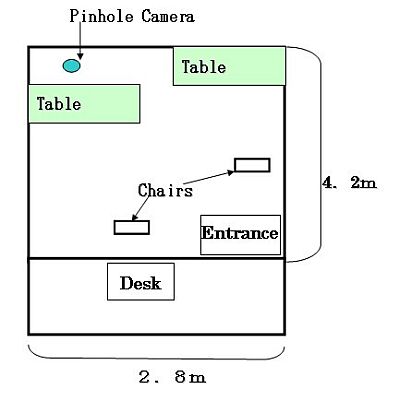
Movement synchrony at the beginning of interactions
between mixed-sex couples:
male initiation, depending on female risk perception
K. Sakaguchi1, T. Hasegawa1 and G.K. Jonsson2
1Cognitive and Behavioral Sciences, University of Tokyo, Tokyo, Japan
2Human Behavior Laboratory, University of Iceland, Reykjavik, Iceland
Human movement has its own rhythms, which can be analyzed as temporal behavior patterns using Theme [1]. Movement synchrony is the synchronization of such rhythms among people, and is one of the hottest topics in the study of non-verbal signals in courtship. Such signals – ‘flirtation’ – must be subtle and implicit, because of risks underlying the bargain between males and females, so movement synchrony has evolved to suit its purpose.
Previous research has showed that such flirtations are mainly controlled by females, and has reasoned that, because females are at higher risk when communicating their interest in males, they must initiate and manipulate communications subtly. However, we know that females are sometimes sexually accessed by males, even when they have little intention of flirtation. What happens in subtle non-verbal communications when males initiate an approach is poorly known. Thus, the first objective of this research was to investigate cases in which males use movement synchrony to initiate courtship.
Some females experience greater sexual access by males than others. If people generally understand movement synchrony as courtship signals, women who are often accessed may have a tendency to synchronize with the movements of men – even when they have no intention of flirting – and may thus be prone to be misunderstood by men. Thus, the second objective of this research was to test this hypothesis.
We began by analysing movement synchrony in the first and last minutes of 10-minute long interactions between 50 unacquainted, mixed-sex couples in a waiting-room situation (Figure 1). Stepwise regression analysis revealed that subjects’ interest in the opposite sex influenced the formation of temporal behavior patterns only at the beginning of interactions. Furthermore, there was a sex difference in the influence of subjects’ interest. As previous research has suggested [2], indices of temporal behavior patterns show that females who are highly interested in the opposite sex tend to synchronise with male rhythms, while highly interested males tend to produce a variety of temporal patterns.

Figure 1. The floor plan of the waiting room where the experiment took place. A pinhole camera was set up, 130 cm above the floor, to videotape subjects. The subjects' chairs were placed about 120 cm apart.
Subjects self-reported the frequency with which they were sexually accessed in public places, and females were divided into two groups: rarely-accessed and highly-accessed. The 50 couples were then divided into two groups on this basis. In the highly-accessed female group, movement synchrony during interactions in the first minute occurred according to females’ interest. On the other hand, in the rarely-accessed female group, pattern formation was controlled by males’ interest (Table 1).

Table 1. Influence of subjects' interest on temporal pattern formation in the first minute of interaction: standardized coefficients from stepwise regression analysis. The left column shows the list of dependent variables; those not normally distributed were log-transformed. These are indices of temporal behavior patterns. "Average number of actors" describes two subjects involved in making the same patterns, i.e. the degree of movement rhythms of the two were synchronized. Female's interest and male's interest are candidates for predictor variables. *coefficient: p < 0.05, **coefficient: p < 0.025.
These results show that movement synchrony, a highly ambiguous mode of non-verbal communication, has an active influence in non-verbal courtship communication, especially at the start of interactions between strangers. In this high-risk situation, it seems that people need to get information about their counterpart very quickly, without being perceived. Male interest influenced pattern formation, but not in the same way as female interest. Females in the highly-accessed group did not synchronize with strangers regardless of their interest; rather, they controlled non-verbal communication and seemed to perceive the high risk of interaction with male strangers, while unconsciously trying to assess them through movement synchrony (Figure 2).

Figure 2. Formation of movement synchrony by highly-interested individuals in the first minute of interaction. Highly-interested males make various patterned movements and act as the time-giver (i.e. control the timing for establishing movement synchrony), especially with rarely-accessed females.
References
Paper presented at Measuring Behavior 2002 , 4th International Conference on Methods and Techniques in Behavioral Research, 27-30 August 2002, Amsterdam, The Netherlands